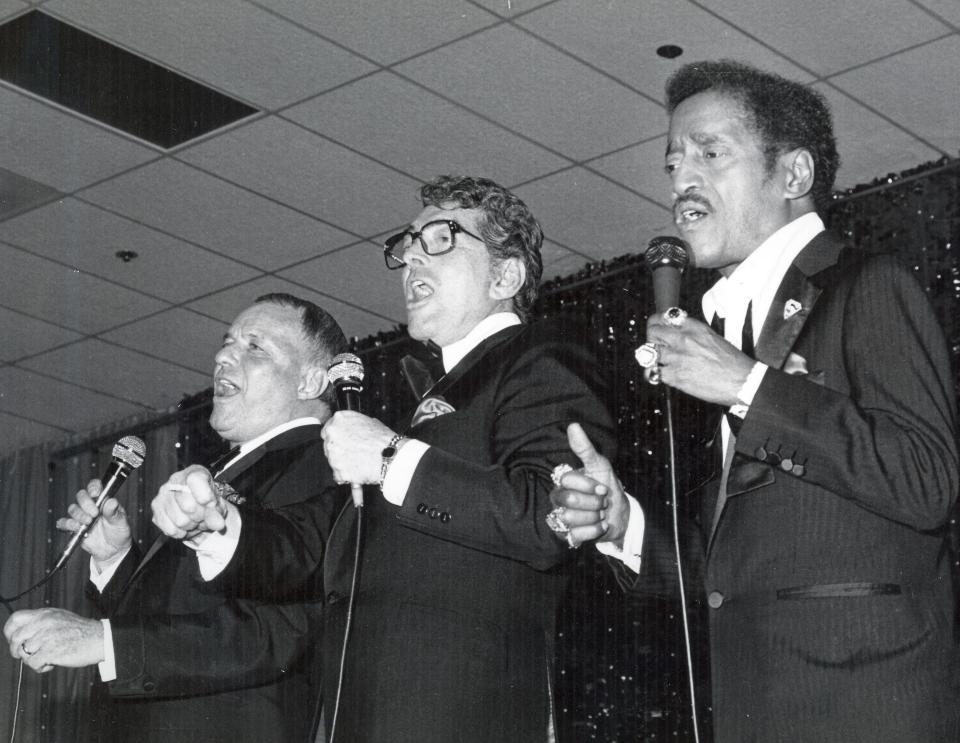History: How I-10 and air conditioning fueled growth and health care services in desert
William Bone, a prolific developer of many of the gated communities in the desert and founder and chairman of the Sunrise Company in Palm Desert, reflected on the tremendous growth in the valley: “The inflection point was 1960. Two things happened: Interstate 10 and air conditioning.”
The prodigious increase in visitors and new residents is noted by author Jeff Crider in an informative new book on the Desert Healthcare Hospital District. The urgent need for health care facilities to service the influx of people caused the original formation of the district in 1948 and the construction of Desert Hospital which opened in 1951.
The popularity of the desert as a destination in the midcentury was fed by developers George and Robert Alexander who provided modest houses with modern designs affordable to the masses.
Crider notes, “While Palm Springs’ growth as a tourist destination and winter home retreat was initially fueled by the attention given to its many celebrity visitors, an even bigger building boom” took place in the 1960s created by easy access afforded by the new freeway and the advent of air conditioning, (making desert living tolerable.)
Crider’s new book celebrates the 75th anniversary of the Healthcare District and chronicles its growth as it grappled with the resultant population explosion. (The book is available by emailing info@dhcd.org with a suggested donation of $15 or at the gift shop at Desert Regional Medical Center.)
Providing health care then was not any easier than it is now. Crider documents in minute detail just how difficult, and while doing so, shares some lesser-known history of the valley.
By 1960, Palm Springs was developing quickly. Almost every other square mile of land was suddenly available for building as the Eisenhower administration made long-term leasing of Indian lands possible. The tribe itself struck the first long-term deal to develop the corner of Indian Canyon and Tahquitz Canyon Ways in Section 14 for the Spa Hotel, bringing an influx of people to the desert.
The voters in the early 1960s were not interested in footing the associated infrastructure bills. A special bond election in 1960 which would have raised $1.92 million for hospital expansion fell short of the two-thirds majority required. The board tried again at the regular November election hoping for a different outcome, but the bond issue failed to reach the two-thirds majority required for passage.
Finally, in November 1963 as reported by The Desert Sun in a 1973 summary, “This time voters relented and gave their November blessing that led to the construction of ‘C’ wing and obstetrics named for Thunderbird and Tamarisk country clubs, respectively, in honor of their $200,000 pledged toward construction, which was completed in 1965.”
A master plan for the hospital previously commissioned from architects Stewart and Roger Williams was discarded and the subsequent plan envisioned a frighteningly large tourist population of 300,000 people by 1985. The voters thought that unimaginable and a $2.6 million bond issue was overwhelmingly defeated in February 1966.
Having failed to convince voters of the urgent need for hospital expansion to match the tremendous growth of residential and commercial development, the district “gave up on the idea of seeking voter approval…instead, the District partnered with the city of Palm Springs and created a nonprofit joint power to issue lease-purchase revenue bonds for capital improvements without seeking voter approval.” The monies raised paid for multiple hospital and service expansions.
And even more money was raised by celebrities and prominent citizens devoted to the cause. Media mogul and Ambassador Walter Annenberg donated. Lillian Disney memorialized Walt with a generous gift. Kirk and Anne Douglas pitched in in a major way. Ric and Rozene Supple were generous with both their time and money. Frederick Loewe, the composer of “My Fair Lady,” “Gigi,” and “Camelot” donated 50% of his royalties to the hospital amounting to millions of dollars over the life of the copyright periods for each song.
And “Frank Sinatra’s support for Desert Hospital wasn’t simply a matter of writing big checks. He was deeply involved in the details of planning star-studded fundraising events…and he did it for decades, generating millions of dollars in donations along with national media attention….”

At the February 1983, “Love In” fundraiser, Sinatra, Dean Martin and Sammy Davis, Jr. performed to a crowd of 900 people each paying $1,000. “Attendees included President Gerald Ford, Angie Dickenson, Gregory and Veronique Peck, Glenn and Cynthia Ford, Robert Wagner, Jill St. John, Kirk and Anne Douglas, James and Gloria Stewart, Gene and Jackie Autry….”
Crider’s book also chronicles less glamorous challenges of internecine board fights, citizens committees, public versus private hospitals, corporate restructuring and political controversies. Much of the difficulties were caused by the problem of inadequate insurance reimbursements imposed by the federal government.
“Despite having growing numbers of patients, a constant stream of property tax revenue and millions of dollars from charitable events as well as donations from celebrities and CEOs who made the Coachella Valley their winter home, Desert Hospital found itself in financial trouble by the 1980s.” This was “a dramatically different financial scenario (than) initially envisioned when President Lyndon B. Johnson signed the Medicare and Medicaid programs into law in 1965.”
Designed to cover operating costs plus 2% for replacement of capital equipment, the federal government eventually replaced the traditional cost-based fee-for-service reimbursements with a system intended to limit payments to hospitals and physicians as a way of controlling the skyrocketing costs. All hospitals still struggle with the repercussions and Crider takes an unvarnished look at how the valley coped with these changes.
Decades later the Healthcare District has evolved to partnering with non-profits to extend services and critical support for many programs and initiatives unimaginable in 1960 when the 10 freeway and the advent of air conditioning created the population explosion in the valley.
This article originally appeared on Palm Springs Desert Sun: Palm Springs history: How I-10 and air conditioning fueled growth

